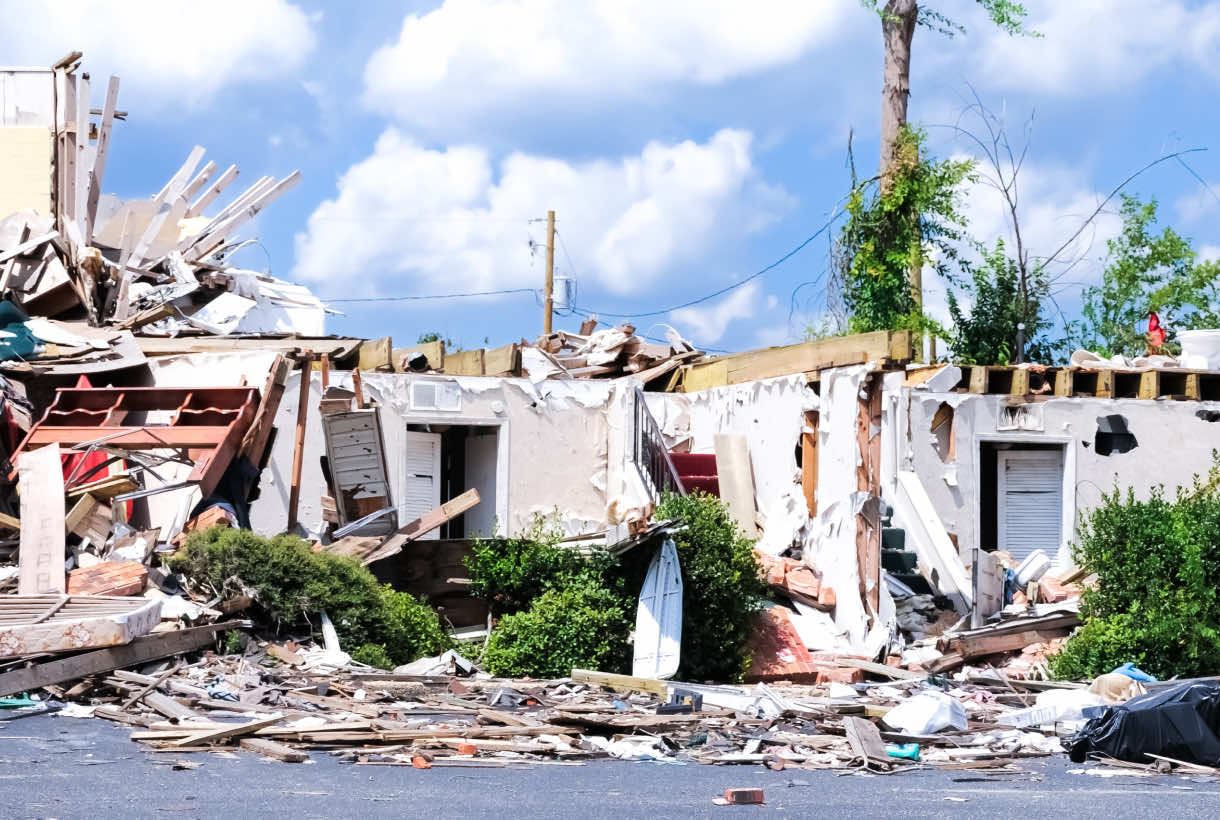The pandemic demonstrated that events far from the office can ripple across your organization and distributed workforce—from COVID shutdowns to China layoffs at suppliers and geopolitical shifts in Europe.
Companies have a dual mandate when a crisis occurs. First, to care for their people, including those who are remote, and second, to keep their operations running.
Recently, OnSolve faced this head-on, not only for our customers but our employees. As an Atlanta-based company with a distributed workforce, Hurricane Ian impacted our employees in Florida. To show them support and help them recover, we collaborated on and activated crisis plans to facilitate the safety of our employees and their families while ensuring minimal disruption to our business. Our lessons learned can be boiled down to four crucial steps to help protect your remote employees in crisis when every second counts.
Step 1: Prepare for a crisis before it happens.
Planning starts with a conversation. Before any crisis, stakeholders from operations, supply chain, HR, and communications should collaborate with risk leaders to assess one key question: what’s the most significant risk to the safety of our employees and their ability to support company operations, customers and drive revenue?
Common threats: Ideally, the organization can access external data to help answer the question. You can review spikes in threats in certain geographies, historical incidents in employees’ communities or crises faced by companies that look like yours. Identify the most common threats for employees and operations (e.g., hurricanes in Florida) and the mitigations to take in advance.
Mitigations: These will vary based on the identified threat, from the strategic to the tactical—from cross-training support teams across geographies to installing on-site generators with extra fuel. In the preparation phase, you should sign delegations of authority in advance so local employees can execute quickly. For example, a company can decide to pre-authorize overtime or provide access to emergency funds. Identifying these in advance helps avoid bottlenecks when time is of the essence.
Build a plan: Ideally, this conversation about risk, mitigation and response becomes the foundation for the crisis response plan (CRP). Rather than writing a massive, 200-page document, break the CRP into a central hub of actionable guides and lists.
Testing the plan: Be sure to test the plan with tabletop exercises before an incident. These exercises are simulations of potential emergencies—severe weather, active assailant, power outage, or a cyber attack—that allow leaders to test response plans. They ensure alignment on execution, teams and messages, as well as identify challenges in advance, so you have a plan for them if they happen. Then, as more information arises or plans change, ensure your playbook is easily accessible and updated.
Learn how this software provider uses OnSolve to proactively identify threats and communicate about them to help keep people safe.Software Provider Protects Employees and the Bottom Line with Critical Event Management
Step 2: Monitor and activate to plan for risk.
Event monitoring will help you know when a crisis is on the horizon and will trigger any needed activations. Organizations are no longer operating in a “business as usual” environment at this stage. This is when employees must step into their crisis management roles. Monitoring keeps crisis management teams informed of what could be coming, refreshes what to do when a crisis or critical event is detected and signals where the impact could be across a company’s people and operations.
Data: The correct data and analytics from various sources like meteorological services, government agencies, regional news, etc., can give you insight into all the factors that lead to a major incident and real-time updates on how they are changing.
Dynamic risk: A company should be aware of its dynamic risk—the chance that one crisis can lead to another (i.e., delayed evacuations from a hurricane can clog roads and highways). Getting as granular as possible lets you know exactly which employees are impacted, directly or indirectly, as the event unfolds.
Analyze: Hurricane Ian affected an enormous area, but before it arrived, we analyzed the risks from multiple sources such as meteorological services, local government emergency declarations, regional news, social media and historical flood areas. With this level of data, we could make faster decisions about evacuations and travel to and from the state.
Activate: Armed with the right insights and monitoring, crisis response teams can be alerted across HR, communications and operations so they not only are responding to the event, they are managing it. In addition, crisis response teams who own specific tasks on the checklist are reminded as early as possible to make adjustments to execute.
For example, Bill’s job is to maintain constant contact with employees in affected areas to see if they are OK and need medical support and if they need logistical or financial support to procure emergency supplies, like sandbags to curtail flooding, before disaster hits. Meanwhile, Roberta is in charge of communicating with the larger employee group, notifying them of office closures and other operational impacts, and ensuring department managers can circumvent any business impact from downtime. Finally, Peter’s role as an IT lead is ensuring employees who can continue working have the tools and resources they need. Unfortunately, much to the chagrin of many crisis managers, stories are common of key individuals acting too late to fulfill duties for their teams.
Step 3: Stay in touch and provide support during a crisis.
One of the most vital components of the active response is communication: monitoring teams need to be able to reach “up and out,” and executives and employees must be able to reach their support team. Unfortunately, traditional phone trees have struggled to keep up. Automation with HR databases and across multiple channels—voice, email, text, app, even pager or desktop alerting—can help.
Communication: Leveraging our multi-modal communication, we used two-way voice, email, text, and app notifications to ensure employees were safe and to know which employees needed additional assistance.
Reinforce trust: When the crisis hits, the most significant thing your employees need from you is trust. They must trust your planning, preparation, decision-making and resources. Continue communicating with and from your Crisis Management Team (CMT), so your employees have the latest information. In addition, employees directly impacted may need emotional support or basic resources, like food, water, supplies, childcare or travel.
Step 4: Focus on recovery, restore and debrief post-crisis.
After the crisis passes, your employees may need the chance to transition home or even begin rebuilding their lives.
Time to recover: You may have to give them time off or flexibility on work days. At OnSolve, we encouraged all employees in affected areas to take as much time off as needed. Employees may need to know the latest information on road closures, downed power lines or canceled flights in days after a crisis. So again, it’s essential to keep everyone up to date.
Debrief: As your employees recover, debrief about how your support plan worked. Feedback is critical in a remote work environment, particularly in crisis management. After Ian, we discussed and documented where we felt we succeeded and where we could improve.
Our post-mortem revealed lessons like the value of not having to think about early warning and communication because the process was automated and the importance of being prepared for worst-case scenarios. Hurricane Ian also reminded us of the importance of including managers of all levels in the crisis management process.
To learn more about getting a head start on your risk management strategy, read our ebook.
Originally published in Quartz, December 2022



